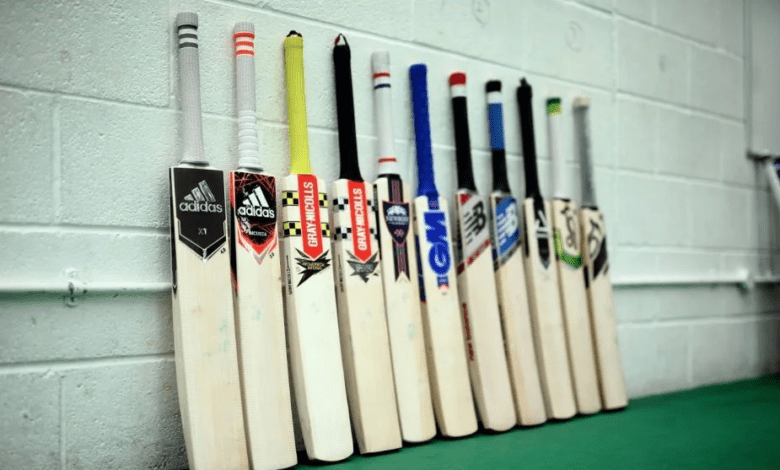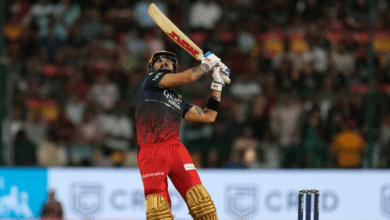How to Select the Right Cricket Bat: Size, Weight, and Material Guide

Introduction
Choosing the right cricket bat is essential for any player, as it directly impacts their performance and technique. In this article, we will provide a comprehensive guide to help you select the right cricket bat based on size, weight, and material considerations.
1. Understand Bat Regulations
Before diving into the selection process, it’s important to familiarize yourself with the bat regulations set by cricket authorities. Different leagues and tournaments may have specific guidelines regarding bat dimensions, including blade size, length, and handle specifications. Ensure that the bat you choose complies with the regulations of the league you will be playing in.
2. Determine Your Playing Style
Consider your playing style and preferred stroke play when choosing a cricket bat. Bats vary in their balance, shape, and pickup, which can affect your ability to execute shots. If you are an aggressive batsman who relies on power hitting, you might prefer a bat with a larger sweet spot and a slightly heavier weight. On the other hand, if you are more inclined towards timing and stroke placement, a lighter bat with better maneuverability might suit you better.
3. Select the Right Bat Size
Choosing the correct bat size is crucial for comfort and performance. Bats are available in different sizes, ranging from size 1 for juniors to size 6 for young adults and full-size bats for senior players. The right bat size depends on the player’s age, height, and playing level. Refer to size guides provided by manufacturers to determine the appropriate bat size for your specific requirements.
4. Consider Bat Weight
Bat weight plays a significant role in the feel and control of the bat. It’s important to find the right balance between bat weight and your physical strength. Generally, lighter bats are easier to maneuver and provide better stroke control, while heavier bats generate more power. Experiment with different bat weights to find the one that allows you to play shots comfortably without sacrificing control.
5. Assess Bat Balance
Bat balance refers to the distribution of weight throughout the bat. Bats can have different balances, such as evenly balanced, mid-balanced, or bottom-heavy. The balance affects the pick-up and swing of the bat. Test different bats by picking them up and swinging them to determine which balance feels most comfortable for your playing style.
6. Evaluate the Sweet Spot
The sweet spot is the area on the bat where the ball makes the cleanest contact, resulting in optimal power and control. Look for bats with a larger sweet spot, as they provide forgiveness for off-center hits and generate more power. Inspect the bat’s profile and consult reviews or seek advice from experienced players to identify bats with a well-positioned and generous sweet spot.
7. Consider Bat Material
Cricket bats are primarily made of two types of materials: English willow and Kashmir willow. English willow bats are considered the top choice due to their superior performance and responsiveness. They offer better power, feel, and durability. Kashmir willow bats are more affordable and suitable for recreational or entry-level players. Choose the material based on your playing level, budget, and desired performance.
8. Check Bat Grains
Bat grains refer to the number of grains visible on the face of the bat. Grains indicate the quality of the willow used. Typically, more grains signify better-quality willow. However, the number of grains does not guarantee performance. Some players prefer bats with fewer grains for their unique playing style. Ultimately, it is a personal preference, but inspect the grains to ensure they are straight, even, and run the full length of the blade.
9. Test the Bat’s Feel
The feel of the bat is subjective and can vary from player to player. It’s important to test the bat’s feel by holding it, assuming your batting stance, and practicing a few shots. Pay attention to how the bat feels in your hands, how it responds to your shots, and if it suits your batting technique. A bat that feels comfortable and allows you to play shots naturally is the ideal choice.
10. Consider the Handle
The handle of the bat affects grip, control, and vibration dampening. It is usually made of cane or composite materials. Evaluate the handle’s grip, thickness, and shape to find one that suits your preference. A comfortable and secure grip is essential for proper shot execution.
FAQs
1. Can I use any size bat for playing cricket?
No, it is important to use a bat that complies with the regulations set by cricket authorities. Different leagues and tournaments may have specific guidelines regarding bat dimensions. Make sure to check the regulations of the league you will be playing in before choosing a bat.
2. How do I determine the right bat size for me?
The right bat size depends on your age, height, and playing level. Consult size guides provided by manufacturers to determine the appropriate bat size for your specific requirements. It is also helpful to try different bat sizes and see which one feels comfortable and allows you to play shots effectively.
3. Should I choose a lighter or heavier bat?
The weight of the bat depends on your physical strength and playing style. Lighter bats are generally easier to maneuver and provide better stroke control, while heavier bats generate more power. Experiment with different bat weights to find the one that suits your playing style and allows you to play shots comfortably without sacrificing control.
4. What is the difference between English willow and Kashmir willow bats?
English willow bats are made from a higher grade of willow and are considered the top choice due to their superior performance, responsiveness, power, and durability. Kashmir willow bats, on the other hand, are more affordable and suitable for recreational or entry-level players. Choose the material based on your playing level, budget, and desired performance.
5. How do I check the quality of the bat’s willow?
Inspect the grains on the face of the bat. Typically, more grains indicate better-quality willow. However, the number of grains does not guarantee performance. Some players prefer bats with fewer grains for their unique playing style. Ensure that the grains are straight, even, and run the full length of the blade.
Pros and Cons
Pros:
- Improved Performance: Choosing the right bat that suits your playing style and technique can significantly improve your performance on the field. It can enhance your shot execution, power, and control.
- Comfort and Feel: A well-fitted and properly weighted bat feels comfortable in your hands and allows you to have better control over your shots. It enables you to play with confidence and execute your strokes effectively.
- Increased Sweet Spot: Bats with larger sweet spots provide forgiveness for off-center hits. They generate more power and improve your chances of making clean contact with the ball, resulting in better shots and scoring opportunities.
- Durability: Selecting a bat made from high-quality materials, such as English willow, can offer better durability. A durable bat can withstand the impact of the ball and last longer, giving you value for your investment.
- Personalized Preference: Choosing your own cricket bat allows you to customize it based on your preferences. You can select the size, weight, handle grip, and other features that suit your playing style and comfort.
Cons:
- Cost: High-quality cricket bats made from superior materials can be more expensive. If you’re on a tight budget, finding a bat that meets your requirements within your price range might be a challenge.
- Limited Availability: Depending on your location and the specific requirements you have for a cricket bat, finding the perfect bat that meets all your criteria may be difficult. It might require more time and effort to find the right bat.
- Trial and Error: Selecting the right cricket bat often involves trial and error. It may take some time to find the bat that feels comfortable and suits your playing style perfectly. This can involve trying out different bats, which can be time-consuming and may require multiple purchases.
- Regulations and Restrictions: Cricket authorities set regulations regarding bat dimensions, and different leagues and tournaments may have specific guidelines. You need to ensure that the bat you choose complies with these regulations to avoid any issues during matches.
- Changing Preferences: Your playing style and preferences may evolve over time. The bat that suits you perfectly now may not be ideal in the future. This means you might need to reassess and potentially replace your cricket bat as your game develops.
Conclusion
Choosing the right cricket bat requires careful consideration of size, weight, material, and personal preferences. Understand the regulations, determine your playing style, and select the appropriate bat size and weight. Consider the balance, sweet spot, material, grains, and handle to find a bat that feels comfortable and suits your technique. Test multiple bats if possible and seek advice from experienced players or coaches. By following these guidelines, you can select a cricket bat that enhances your performance and enjoyment of the game.
Also Read-
How to Stay Updated with IPL News and Player Performances
How to Master IPL Fantasy Cricket: Tips for Building a Winning Team
How to Experience the IPL Live Streaming Options and Packages





2 Comments